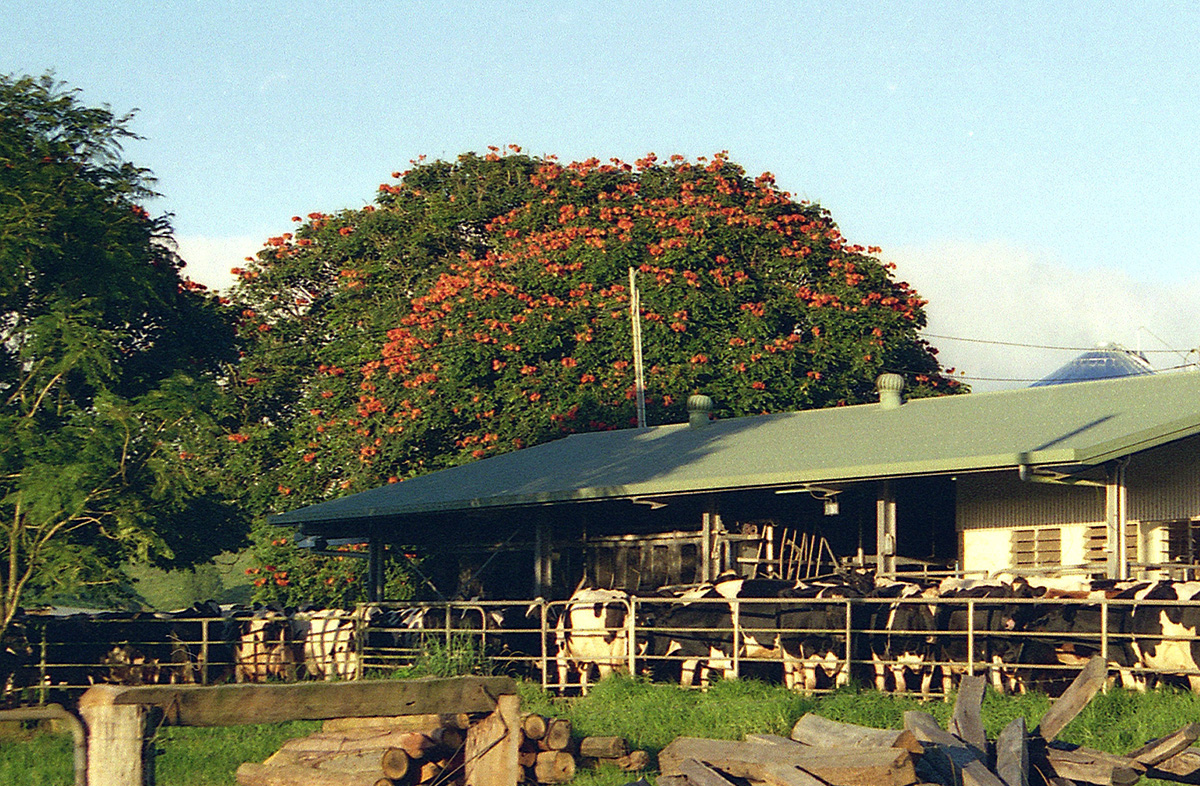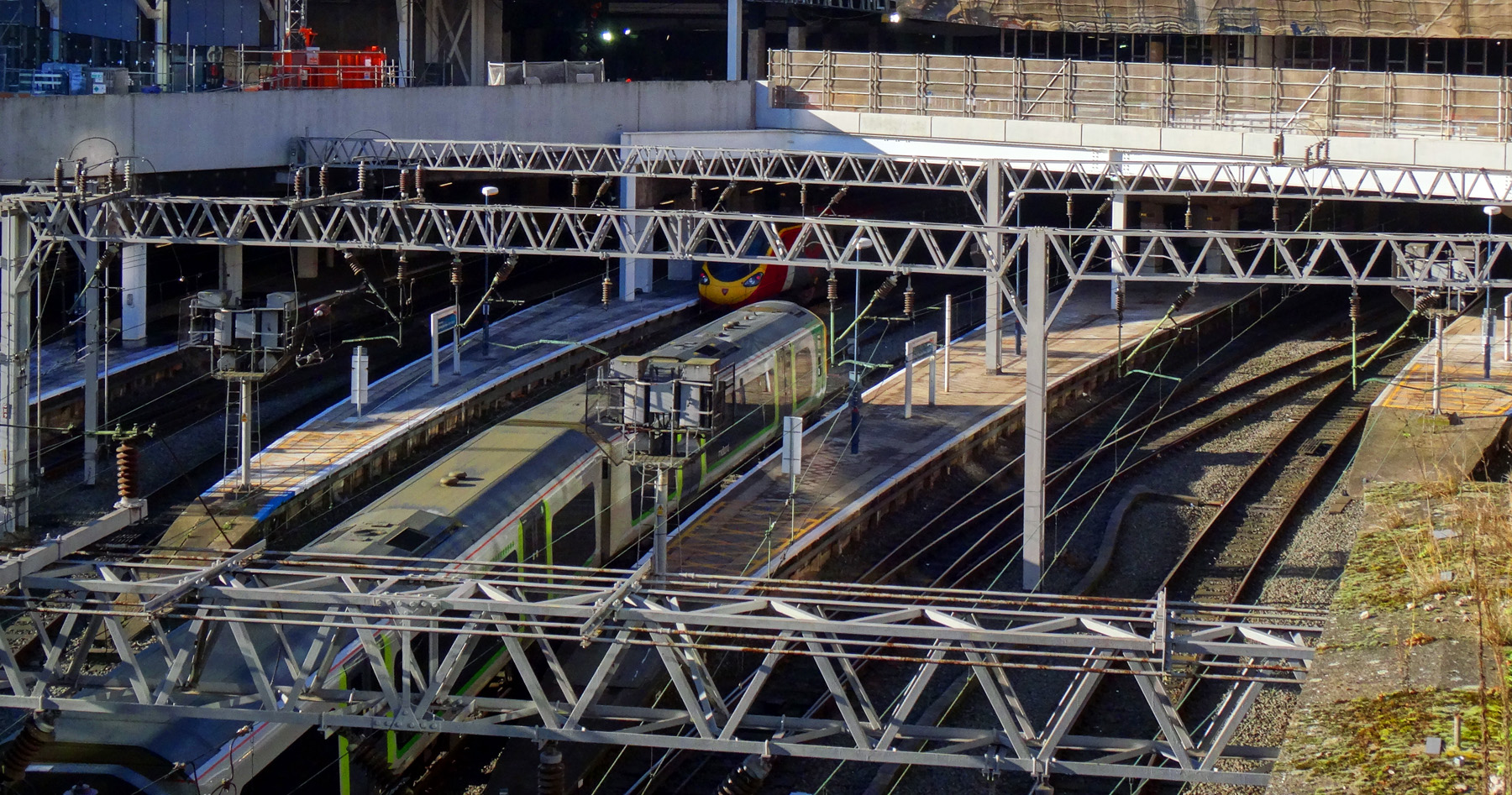 The UK and Australia are set to sign a free-trade deal at the G7 summit in Cornwall on 11–13 June. This will eventually give tariff-free access to each other’s markets, with existing tariffs being phased out over a 15-year period. It is the first trade deal not based on an existing EU template. The government hopes that it will be followed by trade deals with other countries, including New Zealand, Canada and, crucially, the USA.
The UK and Australia are set to sign a free-trade deal at the G7 summit in Cornwall on 11–13 June. This will eventually give tariff-free access to each other’s markets, with existing tariffs being phased out over a 15-year period. It is the first trade deal not based on an existing EU template. The government hopes that it will be followed by trade deals with other countries, including New Zealand, Canada and, crucially, the USA.
But what are the benefits and costs of such a deal?
Trade and comparative advantage
The classic economic argument is that free trade allows countries to benefit from the law of comparative advantage. According to the law, provided opportunity costs of various goods differ in two countries, both of them can gain from mutual trade if they specialise in producing (and exporting) those goods that have relatively low opportunity costs compared with the other country. In the case of the UK and Australia, the UK has a comparative advantage in products such as financial services and high-tech and specialist manufactured products. Australia has a comparative advantage in agricultural products, such as lamb, beef and wheat and in various ores and minerals. By increasing trade in these products, there can be a net efficiency gain to both sides and hence a higher GDP than before.
 There is clearly a benefit to consumers in both countries from cheaper products, but the gains are likely to be very small. The most optimistic estimate is that the gain in UK GDP will be around 0.01% to 0.02%. Part of the reason is the physical distance between the two countries. For products such as meat, grain and raw materials, shipping costs could be relatively high. This might result in no cost advantage over imports from much nearer countries, such as EU member states.
There is clearly a benefit to consumers in both countries from cheaper products, but the gains are likely to be very small. The most optimistic estimate is that the gain in UK GDP will be around 0.01% to 0.02%. Part of the reason is the physical distance between the two countries. For products such as meat, grain and raw materials, shipping costs could be relatively high. This might result in no cost advantage over imports from much nearer countries, such as EU member states.
But modern trade deals are less about tariffs, which, with various WTO trade rounds, are much lower than in the past. Many imports from Australia are already tariff free, with meat currently having a tariff of 12%. Modern trade deals are more about reducing or eliminating non-tariff barriers, such as differing standards and regulations. This is the area where there is a high degree of concern in the UK. Import-competing sectors, such as farming, fear that their products will be undercut by Australian imports produced to lower standards.
Costs of a trade deal
In a perfectly competitive world, with no externalities, labour mobile between sectors and no concerns about income distribution, eliminating tariffs would indeed provide an efficiency gain. But these conditions do not hold. Small farmers are often unable to compete with food producers with considerable market power. The danger is that by driving out such small farmers, food production and supply might not result in lower long-run prices. Much would depend on the countervailing power of supermarkets to continue bearing down on food costs.
 But the question of price is probably the least worrying issue. Meat and grain is generally produced at lower standards in Australia than in the UK, with various pesticides, fertilisers and antibiotics being used that are not permitted in the UK (and the EU). Unless the trade deal can involve UK standards being enforced on products produced in Australia for export to the UK, UK farmers could be undercut by such imports. The question then would be whether labelling of imported food products could alert consumers to the different standards. And even if they did, would consumers simply prefer to buy the cheaper products? If so, this could be seen as a market failure with consumers not taking into account all the relevant health and welfare costs. Better quality food could be seen as a merit good.
But the question of price is probably the least worrying issue. Meat and grain is generally produced at lower standards in Australia than in the UK, with various pesticides, fertilisers and antibiotics being used that are not permitted in the UK (and the EU). Unless the trade deal can involve UK standards being enforced on products produced in Australia for export to the UK, UK farmers could be undercut by such imports. The question then would be whether labelling of imported food products could alert consumers to the different standards. And even if they did, would consumers simply prefer to buy the cheaper products? If so, this could be seen as a market failure with consumers not taking into account all the relevant health and welfare costs. Better quality food could be seen as a merit good.
Then there are the broader social issues of the protection of rural industries and societies. Labour is relatively immobile from farming and there could be a rise in rural unemployment, which could have local multiplier effects, leading to the decline of rural economies. Rural ways of life could be seriously affected, which imposes costs on local inhabitants and visitors.
Trade itself imposes environmental costs. Even if it were privately efficient to transport products half way around the world, the costs of carbon emissions and other pollution may outweigh any private gains. At a time when the world is becoming increasingly concerned about climate change, and with the upcoming COP26 conference in Glasgow in November, it is difficult to align such a trade deal with a greater commitment to cutting carbon emissions.
Articles
- UK makes free-trade offer to Australia despite farmers’ fears
BBC News (22/5/21)
- UK-Australia trade deal: What are the arguments for and against?
BBC News, Chris Morris (21/5/21)
- Australia–UK trade deal can help spur post-pandemic recovery
The Conversation, David Collins (20/5/21)
- Australia will set the precedent for UK trade deals
Prospect, David Henig (21/5/21)
- Britain beefs with Australian farmers as Boris Johnson backs trade deal
Sydney Morning Herald, Mike Foley and Bevan Shields (20/5/21)
- Boris Johnson defends Australia trade deal that will allow cheap foreign meat imports …
Mail Online, David Wilcock (19/5/21)
- City executives raise concerns over hidden costs to trade deals
Financial Times, Daniel Thomas (22/5/21)
- Australia trade deal: Ministers discuss British farmers’ concerns
BBC News (21/5/21)
- Boris Johnson Faces His First Real Brexit Trade Test
Bloomberg, Therese Raphael (21/5/21)
- UK-Australia trade deal could mean children and patients eating meat reared in ways illegal in UK, warn experts
Independent, Jane Dalton (11/5/21)
- Australian farmers rush to reassure UK over looming free trade agreement
The Guardian, Amy Remeikis (19/5/21)
- Brexit: Boris Johnson warned trade deal with Australia could ‘decimate’ British farming
Independent, Adam Forrest (20/5/21)
- Truss’s naivety on trade with Australia could leave the UK exposed
The Observer, Phillip Inman (22/5/21)
- ‘Irresponsible’ Australia trade deal will bring ruin for UK farmers, critics warn
The Observer, James Tapper and Toby Helm (23/5/21)
- Brexit: Boris Johnson rejects claim UK-Australia trade deal would see farmers ‘lose their livelihoods’
Sky News, Tom Rayner (19/5/21)
- Small farms have a huge role to play in our sustainable future
The Guardian, Charles, Prince of Wales (23/5/21)
- Farmers’ opposition to UK-Australia trade deal grows
BBC News, Claire Marshall (2/6/21)
- UK livestock farmers fear Australia trade deal will threaten way of life
Financial Times, Judith Evans and Sebastian Payne (8/6/21)
- The UK–Australia trade deal is not really about economic gain – it’s about demonstrating post-Brexit sovereignty
The Conversation, Tony Heron and Gabriel Siles-Brügge (18/6/21)
Questions
- Why might the UK government be very keen to sign a trade deal with Australia?
- Does the law of comparative advantage prove that freer trade is more efficient than less free trade? Explain.
- What externalities are involved in the UK trading with Australia? Are they similar to those from trading with the USA?
- If a trade deal resulted in lower food prices but a decline in rural communities, how would you establish whether this would be a ‘price worth paying’?
- If some people gain from a trade deal and others lose and if it were established that the benefits to the gainers were larger than the costs to the losers, would this prove that the deal should go ahead?

Back in October 2020 in the blog All change for the railways, we looked at the emergency measures for running the railways in Great Britain following the collapse in rail traffic because of the COVID-19 pandemic. We also looked ahead to plans for reorganising the railways, with the expectation that the current franchising system would be scrapped and replaced with a system whereby the train-operating companies (TOCs) would be awarded a contract to run rail services. They would be paid a performance-related fee. All ticket revenues would go to the government, which would bear the costs and the risks. While this would not be quite renationalisation, it would, in effect, be a contract system where private companies are paid to deliver a public service.
 The Transport Secretary, Grant Shapps, has just announced the new system in a White Paper, which is indeed the anticipated contract system. The White Paper has drawn on the findings of the Williams Rail Review, independently chaired by Keith Williams.
The Transport Secretary, Grant Shapps, has just announced the new system in a White Paper, which is indeed the anticipated contract system. The White Paper has drawn on the findings of the Williams Rail Review, independently chaired by Keith Williams.
The new system has the following features:
- A new public-sector body, Great British Railways (GBR), will be created which will eventually absorb Network Rail.
- GBR will produce five-year business plans. It will also develop a 30-year strategy to shape the long-term development of the railways and will include plans to decarbonise the whole rail network.
- It will be in charge of planning and operating rail infrastructure in England, including track, signalling, stations and depots.
- It will work closely with the devolved rail authorities in Scotland, Wales, London, Merseyside, and Tyne and Wear.
- It will set timetables, plan train operations, set most fares, sell tickets (at stations and on a new dedicated website) and collect revenues.
- The ticketing system will be reformed, with a single integrated system of fares across England, and potentially the devolved rail authorities too. The website will show the best and cheapest options for any given journey. New flexible season tickets will be introduced, allowing workers to travel on limited numbers of days: e.g. eight days in any 28-day period. Also, a new single compensation scheme will simplify the system for refunds.
- Private train-operating companies (TOCs) will run trains over particular routes. They will bid for Passenger Service Contracts (PSCs), which will be awarded by competitive tender. They will be paid a management fee, rather than receiving revenues from ticket sales. The fees will include performance incentives and penalties, which will depend on meeting targets for punctuality, reliability, safety and cleanliness.
- Rolling stock (trains, locomotives and freight wagons) will continue to be procured from the private sector, which will generally be leased to TOCs. It is hoped that by awarding PSCs for a number of years, TOCs will be encouraged to make large-scale procurements of rolling stock.
- GBR in England will be divided into five regional divisions, which will be ‘accountable to customers for their journeys; manage PSCs, stations and infrastructure; procure private partners, such as operators and contractors; manage budgets both locally and regionally; integrate track and train at a local level; work with and be responsive to the needs of local and regional partners, and integrate rail with other transport services’.
- GBR will be held to account by the Office of Rail and Road (ORR), which will monitor its performance.
In its White Paper, the government has recognised that, in many ways, rail privatisation has failed. Page 13 states:
Breaking British Rail into dozens of pieces was meant to foster competition between them and, together with the involvement of the private sector, was supposed to bring greater efficiency and innovation. Little of this has happened. Instead, the fragmentation of the network has made it more confusing for passengers, and more difficult and expensive to perform the essentially collaborative task of running trains on time.
But will the new system bring a better integrated, more efficient, punctual, reliable and greener railway, with more investment, an enlarged network and lower ticket prices? These are certainly aims of the White Paper. But a lot will depend on the details, yet to be finalised.
 Crucially, it is not clear the extent to which the rail system will be subsidised. Will any subsidies internalise the positive externalities from rail travel? Also, it is not clear exactly what incentives and penalties will be introduced to encourage efficiency, punctuality, safety and cleanliness.
Crucially, it is not clear the extent to which the rail system will be subsidised. Will any subsidies internalise the positive externalities from rail travel? Also, it is not clear exactly what incentives and penalties will be introduced to encourage efficiency, punctuality, safety and cleanliness.
What is also not clear is the degree of contestability of rail routes and freight operations. Routes are contestable at the time of bidding for PSCs, with more efficient companies able to outbid the less efficient ones. But with changing conditions and the desire to maintain contestability, contracts need to be relatively short. However, it contracts are too short, there is no incentive for TOCs to invest in trains and infrastructure. Thus inherent in the PSC system is a tension between competition and investment.
It does seem that fares and tickets will be simpler, with greater use of ‘tapping in and out’ as in London and in many other countries, allowing fares to be capped when multiple journeys are made in any given time period. Ultimately, however, it is price, frequency, punctuality, comfort and reliability that are the crucial metrics. Success according to these will depend on how well GBR is run, how well the PSC system operates and how much the rail system is subsidised. The jury is out on these questions.
Video
Articles
- UK rail looks to private sector in biggest shake-up since 1990s
Financial Times, Philip Georgiadis, Andy Bounds and Jim Pickard (20/5/21)
- UK Rail Review – Williams-Shapps Plan for Rail
The National Law Review, Graeme McLellan, Richard Hughes and John Voorhees (21/5/21)
- Great British Railways: Franchises scrapped and changes to season tickets as part of major revamp to UK’s train network
Sky News, Paul Kelso (20/5/21)
- Great British Railways plan aims to simplify privatised system
The Guardian, Gwyn Topham (19/5/21)
- How is the UK government planning to change the rail network?
The Guardian, Gwyn Topham (20/5/21)
- Better rail services promised in huge shake-up
BBC News (21/5/21)
- Rail reform: What does the shake-up mean for you?
BBC News, Kevin Peachey (21/5/21)
- Great British Railways: New public body to take over all trains and track in biggest reforms since privatisation
Independent, Jon Stone (20/5/21)
- Great British Railways body has been announced to run industry – but what about Scotland?
The Scotsman, Alastair Dalton (20/5/21)
- There’s nothing ‘great’ about this new British Railways revamp
The Guardian, Simon Jenkins (20/5/21)
Documents
Questions
- Explain how the franchising system has worked. What problems have arisen with this system?
- If the proposed new system also involves contracts being awarded to train-operating companies, how is it better than the old franchising system?
- What were the Emergency Measures Agreements (EMAs) introduced in the pandemic and the Emergency Recovery Measures Agreements (ERMAs) which replaced them in September 2020? How similar are they to the proposed system of Passenger Service Contracts (PSCs) with train-operating companies?
- Identify the externalities involved in train travel? What is the best way of internalising them?
- Argue the case for and against making train travel cheaper by increasing subsidies.
- To what extent are individual rail routes natural monopolies? Does a franchising system overcome the problems associated with natural monopolies?
 Many developing countries are facing a renewed debt crisis. This is directly related to Covid-19, which is now sweeping across many poor countries in a new wave.
Many developing countries are facing a renewed debt crisis. This is directly related to Covid-19, which is now sweeping across many poor countries in a new wave.
Between 2016 and 2020, debt service as a percentage of GDP rose from an average of 7.1% to 27.1% for South Asian countries, from 8.1% to 14.1% for Sub-Saharan African countries, from 13.1% to 42.3% for North African and Middle Eastern countries, and from 5.6% to 14.7% for East Asian and Pacific countries. These percentages are expected to climb again in 2021 by around 10% of GDP.
Incomes have fallen in developing countries with illness, lockdowns and business failures. This has been compounded by a fall in their exports as the world economy has contracted and by a 19% fall in aid in 2020. The fall in incomes has led to a decline in tax revenues and demands for increased government expenditure on healthcare and social support. Public-sector deficits have thus risen steeply.
And the problem is likely to get worse before it gets better. Vaccination roll-outs in most developing countries are slow, with only a tiny fraction of the population having received just one jab. With the economic damage already caused, growth is likely to be subdued for some time.
This has put developing countries in a ‘trilemma’, as the IMF calls it. Governments must balance the objectives of:
- meeting increased spending needs from the emergency and its aftermath;
- limiting the substantial increase in public debt;
- trying to contain rises in taxes.
Developing countries are faced with a difficult trade-off between these objectives, as addressing one objective is likely to come at the expense of the other two. For example, higher spending would require higher deficits and debt or higher taxes.
The poorest countries have little scope for increased domestic borrowing and have been forced to borrow on international markets. But such debt is costly. Although international interest rates are generally low, many developing countries have had to take on increasing levels of borrowing from private lenders at much higher rates of interest, substantially adding to the servicing costs of their debt.
Debt relief
 International agencies and groups, such as the IMF, the World Bank, the United Nations and the G20, have all advocated increased help to tackle this debt crisis. The IMF has allocated $100bn in lending through the Rapid Financing Instrument (RFI) and the Rapid Credit Facility (RCF) and nearly $500m in debt service relief grants through the Catastrophe Containment and Relief Trust (CCRT). The World Bank is increasing operations to $160bn.
International agencies and groups, such as the IMF, the World Bank, the United Nations and the G20, have all advocated increased help to tackle this debt crisis. The IMF has allocated $100bn in lending through the Rapid Financing Instrument (RFI) and the Rapid Credit Facility (RCF) and nearly $500m in debt service relief grants through the Catastrophe Containment and Relief Trust (CCRT). The World Bank is increasing operations to $160bn.
The IMF is also considering an increase in special drawing rights (SDRs) from the current level of 204.2bn ($293.3bn) to 452.6bn ($650bn) – a rise of 121.6%. This would be the first such expansion since 2009. It has received the support of both the G7 and the G20. SDRs are reserves created by the IMF whose value is a weighted average of five currencies – the US dollar (41.73%), the euro (30.93%), the Chinese yuan (10.92%), the Japanese yen (8.33%) and the pound sterling (8.09%).
Normally an increase in SDRs would be allocated to countries according their IMF quotas, which largely depend on the size of their GDP and their openness. Any new allocation under this formula would therefore go mainly to developed countries, with developing economies getting only around $60bn of the extra $357bn. It has thus been proposed that developed countries give much of their allocation to developing countries. These could then be used to cancel debts. This proposal has been backed by Janet Yellen, the US Secretary of the Treasury, who said she would “strongly encourage G20 members to channel excess SDRs in support of recovery efforts in low-income countries, alongside continued bilateral financing”.
 The G20 countries, with the support of the IMF and World Bank, have committed to suspend debt service payments by eligible countries which request to participate in its Debt Service Suspension Initiative (DSSI). There are 73 eligible countries. The scheme, now extended to 31 December 2021, provides a suspension of debt-service payments owed to official bilateral creditors. In return, borrowers commit to use freed-up resources to increase social, health or economic spending in response to the crisis. As of April 2021, 45 countries had requested to participate, with savings totalling more than $10bn. The G20 has also called on private creditors to join the DSSI, but so far without success.
The G20 countries, with the support of the IMF and World Bank, have committed to suspend debt service payments by eligible countries which request to participate in its Debt Service Suspension Initiative (DSSI). There are 73 eligible countries. The scheme, now extended to 31 December 2021, provides a suspension of debt-service payments owed to official bilateral creditors. In return, borrowers commit to use freed-up resources to increase social, health or economic spending in response to the crisis. As of April 2021, 45 countries had requested to participate, with savings totalling more than $10bn. The G20 has also called on private creditors to join the DSSI, but so far without success.
Despite these initiatives, the scale of debt relief (as opposed to extra or deferred lending) remains small in comparison to earlier initiatives. Under the Heavily Indebted Poor Countries initiative (HIPC, launched 1996) and the Multilateral Debt Relief Initiative (MDRI, launched 2005) more than $100bn of debt was cancelled.
Since the start of the pandemic, major developed countries have spent between $10 000 and $20 000 per head in stimulus and social support programmes. Sub-Saharan African countries on average are seeking only $365 per head in support.
Articles and blogs
Podcast
Report
Data
Questions
- Imagine you are an economic advisor to a developing country attempting to rebuild the economy after the coronavirus pandemic. How would you advise it to proceed, given the ‘trilemma’ described above?
- How does the News24 article define ‘smart debt relief’. Do you agree with the definition and the means of achieving smart debt relief?
- To what extent is it in the interests of the developed world to provide additional debt relief to poor countries whose economies have been badly affected by the coronavirus pandemic?
- Research ‘debt-for-nature swaps’. To what extent can debt relief for countries affected by the coronavirus pandemic be linked to tackling climate change?
 With the coronavirus pandemic having reached almost every country in the world, the impact on the global economy has been catastrophic. Governments have struggled balancing the spread of the virus and keeping the economy afloat. This has left businesses counting the costs of various control measures and numerous lockdowns. The crisis has particularly affected small and medium-sized enterprises (SMEs), causing massive job losses and longer-term economic scars. Among these is an increase in the market power held by dominant firms as they emerge even stronger while smaller rivals fall away.
With the coronavirus pandemic having reached almost every country in the world, the impact on the global economy has been catastrophic. Governments have struggled balancing the spread of the virus and keeping the economy afloat. This has left businesses counting the costs of various control measures and numerous lockdowns. The crisis has particularly affected small and medium-sized enterprises (SMEs), causing massive job losses and longer-term economic scars. Among these is an increase in the market power held by dominant firms as they emerge even stronger while smaller rivals fall away.
It is feared that with the full effects of the pandemic not yet realised, there may well be a wave of bankruptcies that will hit SMEs harder than larger firms, particularly in the most affected industries. Larger firms are most likely to be more profitable in general and more likely to have access to finance. Firm-level analysis using Orbis data, which includes listed and private firms, suggests that the pandemic-driven wave of bankruptcies will lead to increases in industry concentration and market power.
What is market power?
 A firm holds a dominant position if its power enables it to operate within the market without taking account of the reaction of its competitors or of intermediate or final consumers. The key role of competition authorities around the world is to protect the public interest, particularly against firms abusing their dominant positions.
A firm holds a dominant position if its power enables it to operate within the market without taking account of the reaction of its competitors or of intermediate or final consumers. The key role of competition authorities around the world is to protect the public interest, particularly against firms abusing their dominant positions.
The UK’s competition authority, the Competition and Markets Authority (CMA) states:
Market power arises where an undertaking does not face effective competitive pressure. …Market power is not absolute but is a matter of degree; the degree of power will depend on the circumstances of each case. Market power can be thought of as the ability profitably to sustain prices above competitive levels or restrict output or quality below competitive levels. An undertaking with market power might also have the ability and incentive to harm the process of competition in other ways; for example, by weakening existing competition, raising entry barriers, or slowing innovation.
It can be hard to distinguish between a rapidly growing business and growing concentration of market power. In a pandemic, these distinctions can become even more difficult to discern, since there really is a deep need for a rapid deployment of capital, often in distressed situations. It is also not always evident whether the attempt to grow is driven by the need for more productive capacity, or by the desire to engage in financial engineering or to acquire market power.
It may be the case that, as consumers, we simply have no choice but to depend on various monopolies in a crisis, hoping that they operate in the public interest or that the competition authorities will ensure that they do so. With Covid-19 for example, economies will have entered the pandemic with their existing institutions, and therefore the only way to operate may be through channels controlled by concentrated power. Market dominance can occur for what seem to be good, or least necessary, reasons.
Why is market power a problem?
 Why is it necessarily a problem if a successful company grows bigger than its competitors through hard work, smart strategies, and better technology adoption? It is important to recognise that increases in market power do not always mean an abuse of that market power. Just because a company may dominate the market, it does not mean there is a guaranteed negative impact on the consumer or industry. There are many advantages to a monopoly firm and, therefore, it can be argued that the existence of a market monopoly in itself should not be a cause of concern for the regulator. Unless there is evidence of past misconduct of dominance, which is abusive for the market and its stakeholders, some would argue that there is no justification for any involvement by regulators at all.
Why is it necessarily a problem if a successful company grows bigger than its competitors through hard work, smart strategies, and better technology adoption? It is important to recognise that increases in market power do not always mean an abuse of that market power. Just because a company may dominate the market, it does not mean there is a guaranteed negative impact on the consumer or industry. There are many advantages to a monopoly firm and, therefore, it can be argued that the existence of a market monopoly in itself should not be a cause of concern for the regulator. Unless there is evidence of past misconduct of dominance, which is abusive for the market and its stakeholders, some would argue that there is no justification for any involvement by regulators at all.
However, research by the International Monetary Fund concluded that excessive market power in the hands of a few firms can be a drag on medium-term growth, stifling innovation and holding back investment. Given the severity of the economic impact of the pandemic, such an outcome could undermine the recovery efforts by governments. It could also prevent new and emerging firms entering the market at a time when dynamism is desperately needed.
The ONS defines business dynamism as follows:
Business dynamism relates to measures of birth, growth and decline of businesses and its impact on employment. A steady rate of business creation and closure is necessary for an economy to grow in the long-run because it allows new ideas to flourish.
A lack of business dynamism could lead to a stagnation in productivity and wage growth. It also affects employment through changes in job creation and destruction. In this context, the UK’s most recent unemployment rate was 5%. This is the highest figure for five years and is predicted to rise to 6.5% by the end of 2021. Across multiple industries, there is now a trend of falling business dynamism with small businesses failing to break out of their local markets and start-up companies whose prices are undercut by a big rival. This creates missed opportunities in terms of growth, job creation, and rising incomes.
There has been a rise in mergers and acquisitions, especially amongst dominant firms, which is contributing to these trends. Again, it is important to recognise that mergers and acquisitions are not in themselves a problem; they can yield cost savings and produce better products. However, they can also weaken incentives for innovation and strengthen a firm’s ability to charge higher prices. Analysis shows that mergers and acquisitions by dominant firms contribute to an industry-wide decline in business dynamism.
Changes in market power due to the pandemic
The IMF identifies key indicators for market power, such as the percentage mark-up of prices over marginal cost, and the concentration of revenues among the four biggest players in a sector. New research shows that these key indicators of market power are on the rise. It is estimated that due to the pandemic, this increase in market dominance could now increase in advanced economies by at least as much as it did in the fifteen years to the end of 2015.
 Global price mark-ups have risen by more than 30%, on average, across listed firms in advanced economies since 1980. And in the past 20 years, mark-up increases in the digital sector have been twice as steep as economy-wide increases. Increases in market power across multiple industries caused by the pandemic would exacerbate a trend that goes back over four decades.
Global price mark-ups have risen by more than 30%, on average, across listed firms in advanced economies since 1980. And in the past 20 years, mark-up increases in the digital sector have been twice as steep as economy-wide increases. Increases in market power across multiple industries caused by the pandemic would exacerbate a trend that goes back over four decades.
It could be argued that firms enjoying this increase in market share and strong profits is just the reward for their growth. Such success if often a result of innovation, efficiency, and improved services. However, there are growing signs in many industries that market power is becoming entrenched amid an absence of strong competitors for dominant firms. It is estimated that companies with the highest mark-ups in a given year, have an almost 85 percent chance of remaining a high mark-up firm the following year. According to experts, some of these businesses have created entry barriers – regulatory or technology driven – which are incredibly high.
Professor Jayant R. Varma, a member of the MPC of the Reserve Bank of India (RBI), observed that in several sectors characterised by an oligopolistic core and a competitive periphery, the oligopolistic core has weathered the pandemic and it is the competitive periphery that has been debilitated. Rising profits and profit margins, improving capacity utilisation and lack of new capacity additions create ripe conditions for the oligopolistic core to start exercising pricing power.
The drivers and macroeconomic implications of such rises in market power are likely to differ across economies and individual industries. Even in those industries that benefited from the crisis, such as the digital sector, dominant players are among the biggest winners. The technology industry has been under the microscope in recent years, and increasingly the big tech firms are under scrutiny from regulators around the world. The market disruptors that displaced incumbents two decades ago have become increasingly dominant players that do not face the same competitive pressures from today’s would-be disruptors. The pandemic is adding to powerful underlying forces such as network effects and economies of scale and scope.
 A new regulator that aims to curb this increasing dominance of the tech giants has been established in the UK. The Digital Markets Unit (DMU) will be based inside the Competition and Markets Authority. The DMU will first look to create new codes of conduct for companies such as Facebook and Google and their relationship with content providers and advertisers. Business Secretary Kwasi Kwarteng said the regime will be ‘unashamedly pro-competition’.
A new regulator that aims to curb this increasing dominance of the tech giants has been established in the UK. The Digital Markets Unit (DMU) will be based inside the Competition and Markets Authority. The DMU will first look to create new codes of conduct for companies such as Facebook and Google and their relationship with content providers and advertisers. Business Secretary Kwasi Kwarteng said the regime will be ‘unashamedly pro-competition’.
Policy Responses
The additions in regulation in the UK fall in line with the guidance from the IMF. It recommends that adjustments to competition-policy frameworks need to be made in order to minimise the adverse effects of market dominance. Such adjustments must, however, be tailored to national circumstances, both in general and to address the specific challenges raised by the surge of the digital economy.
It recommends the following five actions:
- Competition authorities should be increasingly vigilant when enforcing merger control. The criteria for competition authorities to review a deal should cover all relevant cases – including acquisitions of small players that may grow to compete with dominant firms.
- Second, competition authorities should more actively enforce prohibitions on the abuse of dominant positions and make greater use of market investigations to uncover harmful behaviour without any reported breach of the law.
- Greater efforts are needed to ensure competition in input markets, including labour markets.
- Competition authorities should be empowered to keep pace with the digital economy, where the rise of big data and artificial intelligence is multiplying incumbent firms’ advantage. Facilitating data portability and interoperability of systems can make it easier for new firms to compete with established players.
- Investments may be needed to further boost sector-specific expertise amid rapid technological change.
Conclusion
The crisis has had a significant impact on all businesses, with many shutting their doors for good. However, there has been a greater negative impact on SMEs. Even in industries that have flourished from the pandemic, it is the dominant firms that have emerged the biggest winners. There is concern that the increasing market power will remain embedded in many economies, stifling future competition and economic growth. While the negative effects of increased market power have been moderate so far, the findings suggest that competition authorities should be increasingly vigilant to ensure that these effects do not become more harmful in the future.
Reviews of competition policy frameworks have already begun in some major economies. Young, high-growth firms that innovate and create high-quality jobs deserve a level playing field and a fair chance to succeed. Support directed to SMEs is important, as many small firms have been unable to benefit from government programmes designed to help firms access financing during the pandemic. Policymakers should act now to prevent a further, sharp rise in market power that could hold back the post-pandemic recovery.
Articles
Podcast
Official documents
Questions
- What are the arguments for and against the assistance of a monopoly?
- What barriers to entry may exist that prevent small firms from entering an industry?
- What policies can be implemented to limit market power?
- Define and explain market dynamism.
 Throughout the pandemic, the fight against COVID-19 has often been framed in terms of striking a balance between the health of the public and the health of the economy. This leads to the assumption that a trade-off must exist between these two objectives. Countries, therefore, have to decide between lives and livelihoods. However, one year on since lockdowns swept the globe the evidence suggests that the trade-off between sacrificing lives and sacrificing the economy is not necessarily clear cut.
Throughout the pandemic, the fight against COVID-19 has often been framed in terms of striking a balance between the health of the public and the health of the economy. This leads to the assumption that a trade-off must exist between these two objectives. Countries, therefore, have to decide between lives and livelihoods. However, one year on since lockdowns swept the globe the evidence suggests that the trade-off between sacrificing lives and sacrificing the economy is not necessarily clear cut.
Controlling the virus
Restrictions such as social distancing and lockdowns were introduced in order to minimise the spread of the virus, prevent hospitals from being overwhelmed, and ultimately save lives. However, as these measures are put in place, schools were closed, businesses and factories stopped operating, and economic activity shrank. This would suggest therefore, that society inevitably faces a trade-off between lost lives versus lost livelihoods.
 It could be argued, therefore, that in the short run these interventions create a ‘health–wealth trade-off’. The lockdown restrictions save lives by preventing transmission, but they came at the cost of lost output, income and therefore GDP. This would also imply that the trade-off works in reverse when the lockdown restrictions are eased. As measures are relaxed, the economy can begin to recover but at the cost of an increased threat of the virus spreading again.
It could be argued, therefore, that in the short run these interventions create a ‘health–wealth trade-off’. The lockdown restrictions save lives by preventing transmission, but they came at the cost of lost output, income and therefore GDP. This would also imply that the trade-off works in reverse when the lockdown restrictions are eased. As measures are relaxed, the economy can begin to recover but at the cost of an increased threat of the virus spreading again.
What are the costs?
In order to work out if a trade-off exists and what costs are involved, there must be a monetary value placed on human life. While this may seem unethical, governments, civil courts, regulatory bodies and companies do it all the time. The very existence of the life insurance industry is testament to the fact that human lives can be measured in monetary terms. One approach to measuring valuing life, commonly used by economists who conduct cost-benefit analyses, is the ‘value of statistical life’. It measures the loss or gain that arises from changes in the incidence of death, by eliciting people’s willingness to pay for small reductions in the probability of death, or their willingness to accept compensation in exchange for tolerating a small increase in the chance of death. (see the blog Lockdown – again. Is it worth it?)
Take the example of a complete lockdown. The potential number of lives saved can be estimated based on infection and fatality rates estimated from epidemiological models. This can then be multiplied by value of statistical life to compute the monetary value of saved lives. If this number exceeds the economic costs of a complete lockdown, then we know that it is desirable.
The trade-off between lost lives versus the economy is often erroneously viewed as an all-or-nothing choice between complete lockdown versus zero restrictions. However, in reality, there is a continuum in stringency of restrictions and it is not an all-or-nothing comparison.
Death rates vs downturns
In order to explore the existence of this trade-off, we can compare the health and economic impacts of the pandemic in different countries. If such a trade-off exists, then countries with lower death rates should have experienced larger economic downturns. However, when comparing the COVID-19 death rates with GDP data, the result is the opposite: countries that have managed to protect their population’s health in the pandemic have generally also protected their economy too. This suggests that there was never a simple binary trade-off between the two factors. Those countries that experienced the biggest first wave of excess deaths, also had the biggest hits to the economy.
 The UK was the hardest hit of similar countries on both measures within the G7 group of industrialised countries. The shape of the recession in the UK from the pandemic and lockdowns was extraordinary and historic. However, it was also unique as there was a very sharp fall followed by a rapid rebound. Over 2020, GDP saw the largest hit in three centuries; larger than any single year of the Great Wars or the 1920s Depression.
The UK was the hardest hit of similar countries on both measures within the G7 group of industrialised countries. The shape of the recession in the UK from the pandemic and lockdowns was extraordinary and historic. However, it was also unique as there was a very sharp fall followed by a rapid rebound. Over 2020, GDP saw the largest hit in three centuries; larger than any single year of the Great Wars or the 1920s Depression.
Studies of the declines in GDP contradict the idea of a trade-off, showing that countries that suffered the most severe economic downturns, such as Peru, Spain and the UK, were generally among the countries with the highest COVID-19 death rates. There are countries that have experienced the reverse too; Taiwan, South Korea, and Lithuania all experienced modest declines in economic output but have also managed to keep the death rate low.
It should also be noted that some countries that had similar falls in GDP experienced very different death rates from each other. When comparing the USA and Sweden with Denmark and Poland, they all saw similar declines in the economy with contractions of around 8–9%. However, the USA and Sweden recorded 5–10 times more deaths per million. This therefore suggests that there is no clear trade-off between the health of the population and the health of the economy.
There will be many different factors that impact on the death rate for each individual country and by how much the economy has been affected. Such factors will even go beyond the policy decisions that have been made throughout the pandemic about how best to suppress the transmission of the virus. However, from the data available, there is no clear evidence to suggest that a trade-off between the health and the economy exists. If anything, it suggests that the relationship works in the opposite direction.
Save the economy by saving lives
 Given the arguments against the existence of the trade-off, it could be argued that in order to limit the economic damage caused by the pandemic, the focus needs to start and end with controlling the spread of the virus. Experiments that have been conducted across the world definitively show that no country can prevent the economic damage without first addressing the pandemic that causes it. Those countries that acted swiftly in implementing harsh measures to control the virus, are now reopening in stages and their economies are growing. Countries such as China, Australia, New Zealand, Iceland, and Singapore, which all invested primarily in swift coronavirus suppression, have effectively eliminated the virus and are seeing their economies begin to grow again.
Given the arguments against the existence of the trade-off, it could be argued that in order to limit the economic damage caused by the pandemic, the focus needs to start and end with controlling the spread of the virus. Experiments that have been conducted across the world definitively show that no country can prevent the economic damage without first addressing the pandemic that causes it. Those countries that acted swiftly in implementing harsh measures to control the virus, are now reopening in stages and their economies are growing. Countries such as China, Australia, New Zealand, Iceland, and Singapore, which all invested primarily in swift coronavirus suppression, have effectively eliminated the virus and are seeing their economies begin to grow again.
China, in particular, stands out amongst this group of countries. The Chinese authorities acted very quickly, and firmly, but also the levels of compliance of the population have been very high. However, it could be argued that few countries possess the infrastructure that exists in China to facilitate such high compliance. The fact that the lockdown in China was so effective reduced both losses to the economy and the need for stimulus measures. China is also one of the few countries that have achieved a “V-shaped” recovery. Countries such as Korea, Norway and Finland also appear to have responded relatively well.
Most of the countries that prioritised supporting their economies and resisted, limited, or prematurely curtailed interventions to control the pandemic faced runaway rates of infection and further national lockdowns. The examples of the UK, the USA and Brazil are often quoted, with many arguing that these countries responded too late and too haphazardly. Both have experienced high numbers of deaths.
Conclusion
Discussions around the responses to the pandemic and what appropriate action should be taken have predominately been about how countries can strike the balance between protecting people’s health and protecting the economy. However, from observing the GDP data available there is no clear evidence of a definitive trade-off; rather the relationship between the health and economic impacts of the pandemic goes in the opposite direction. As well as saving lives, countries controlling the outbreak effectively may have adopted the best economic strategy too. It is important to recognise that many factors have affected the death rate and the impact on the economy, and the full impacts of the pandemic are yet to be seen. However, it is by no means clear that the trade-off between greater emphasis on sacrificing lives or sacrificing the economy is as real as has been suggested. If such a trade-off does exist, it is, at best, a weak one.
Articles
- In a pandemic it isn’t a case of health v wealth
BBC News, Faisal Islam (17/3/21)
- To Save the Economy, Save People First
Institute for New Economics Thinking, Phillip Alvelda, Thomas Ferguson, and John C. Mallery (18/11/20)
- Covid-19: Is there a trade-off between economic damage and loss of life?
LSE Blogs, Bernard H Casey (18/12/20)
- The COVID-19 dilemma: Public health versus the economy
Asian Development Bank Blogs, Euston Quah, Eik Leong Swee and Donghyun Park (24/11/20)
- Valuating health vs wealth: The effect of information and how this matters for COVID-19 policymaking
VOXEU, Shaun P. Hargreaves Heap, Christel Koop, Konstantinos Matakos, Asli Unan, Nina Weber (6/6/20)
- Which countries have protected both health and the economy in the pandemic?
Our World in Data, Joe Hasell (1/9/20)
Questions
- Define and explain the difference between a substitute and complementary good.
- Using your answer to question 1, describe the existence of a trade-off.
- Discuss the reasons why the trade-off between health and the economy would work in the opposite direction.
 The UK and Australia are set to sign a free-trade deal at the G7 summit in Cornwall on 11–13 June. This will eventually give tariff-free access to each other’s markets, with existing tariffs being phased out over a 15-year period. It is the first trade deal not based on an existing EU template. The government hopes that it will be followed by trade deals with other countries, including New Zealand, Canada and, crucially, the USA.
The UK and Australia are set to sign a free-trade deal at the G7 summit in Cornwall on 11–13 June. This will eventually give tariff-free access to each other’s markets, with existing tariffs being phased out over a 15-year period. It is the first trade deal not based on an existing EU template. The government hopes that it will be followed by trade deals with other countries, including New Zealand, Canada and, crucially, the USA.  There is clearly a benefit to consumers in both countries from cheaper products, but the gains are likely to be very small. The most optimistic estimate is that the gain in UK GDP will be around 0.01% to 0.02%. Part of the reason is the physical distance between the two countries. For products such as meat, grain and raw materials, shipping costs could be relatively high. This might result in no cost advantage over imports from much nearer countries, such as EU member states.
There is clearly a benefit to consumers in both countries from cheaper products, but the gains are likely to be very small. The most optimistic estimate is that the gain in UK GDP will be around 0.01% to 0.02%. Part of the reason is the physical distance between the two countries. For products such as meat, grain and raw materials, shipping costs could be relatively high. This might result in no cost advantage over imports from much nearer countries, such as EU member states. But the question of price is probably the least worrying issue. Meat and grain is generally produced at lower standards in Australia than in the UK, with various pesticides, fertilisers and antibiotics being used that are not permitted in the UK (and the EU). Unless the trade deal can involve UK standards being enforced on products produced in Australia for export to the UK, UK farmers could be undercut by such imports. The question then would be whether labelling of imported food products could alert consumers to the different standards. And even if they did, would consumers simply prefer to buy the cheaper products? If so, this could be seen as a market failure with consumers not taking into account all the relevant health and welfare costs. Better quality food could be seen as a merit good.
But the question of price is probably the least worrying issue. Meat and grain is generally produced at lower standards in Australia than in the UK, with various pesticides, fertilisers and antibiotics being used that are not permitted in the UK (and the EU). Unless the trade deal can involve UK standards being enforced on products produced in Australia for export to the UK, UK farmers could be undercut by such imports. The question then would be whether labelling of imported food products could alert consumers to the different standards. And even if they did, would consumers simply prefer to buy the cheaper products? If so, this could be seen as a market failure with consumers not taking into account all the relevant health and welfare costs. Better quality food could be seen as a merit good.
 The Transport Secretary, Grant Shapps, has just announced the new system in a
The Transport Secretary, Grant Shapps, has just announced the new system in a  Crucially, it is not clear the extent to which the rail system will be subsidised. Will any subsidies internalise the positive externalities from rail travel? Also, it is not clear exactly what incentives and penalties will be introduced to encourage efficiency, punctuality, safety and cleanliness.
Crucially, it is not clear the extent to which the rail system will be subsidised. Will any subsidies internalise the positive externalities from rail travel? Also, it is not clear exactly what incentives and penalties will be introduced to encourage efficiency, punctuality, safety and cleanliness. 
 Many developing countries are facing a renewed debt crisis. This is directly related to Covid-19, which is now sweeping across many poor countries in a new wave.
Many developing countries are facing a renewed debt crisis. This is directly related to Covid-19, which is now sweeping across many poor countries in a new wave.  International agencies and groups, such as the IMF, the World Bank, the United Nations and the G20, have all advocated increased help to tackle this debt crisis. The IMF has allocated $100bn in lending through the Rapid Financing Instrument (
International agencies and groups, such as the IMF, the World Bank, the United Nations and the G20, have all advocated increased help to tackle this debt crisis. The IMF has allocated $100bn in lending through the Rapid Financing Instrument ( The G20 countries, with the support of the IMF and World Bank, have committed to suspend debt service payments by eligible countries which request to participate in its Debt Service Suspension Initiative (
The G20 countries, with the support of the IMF and World Bank, have committed to suspend debt service payments by eligible countries which request to participate in its Debt Service Suspension Initiative ( With the coronavirus pandemic having reached almost every country in the world, the impact on the global economy has been catastrophic. Governments have struggled balancing the spread of the virus and keeping the economy afloat. This has left businesses counting the costs of various control measures and numerous lockdowns. The crisis has particularly affected small and medium-sized enterprises (SMEs), causing massive job losses and longer-term economic scars. Among these is an increase in the market power held by dominant firms as they emerge even stronger while smaller rivals fall away.
With the coronavirus pandemic having reached almost every country in the world, the impact on the global economy has been catastrophic. Governments have struggled balancing the spread of the virus and keeping the economy afloat. This has left businesses counting the costs of various control measures and numerous lockdowns. The crisis has particularly affected small and medium-sized enterprises (SMEs), causing massive job losses and longer-term economic scars. Among these is an increase in the market power held by dominant firms as they emerge even stronger while smaller rivals fall away. A firm holds a dominant position if its power enables it to operate within the market without taking account of the reaction of its competitors or of intermediate or final consumers. The key role of competition authorities around the world is to protect the public interest, particularly against firms abusing their dominant positions.
A firm holds a dominant position if its power enables it to operate within the market without taking account of the reaction of its competitors or of intermediate or final consumers. The key role of competition authorities around the world is to protect the public interest, particularly against firms abusing their dominant positions. Why is it necessarily a problem if a successful company grows bigger than its competitors through hard work, smart strategies, and better technology adoption? It is important to recognise that increases in market power do not always mean an abuse of that market power. Just because a company may dominate the market, it does not mean there is a guaranteed negative impact on the consumer or industry. There are many advantages to a monopoly firm and, therefore, it can be argued that the existence of a market monopoly in itself should not be a cause of concern for the regulator. Unless there is evidence of past misconduct of dominance, which is abusive for the market and its stakeholders, some would argue that there is no justification for any involvement by regulators at all.
Why is it necessarily a problem if a successful company grows bigger than its competitors through hard work, smart strategies, and better technology adoption? It is important to recognise that increases in market power do not always mean an abuse of that market power. Just because a company may dominate the market, it does not mean there is a guaranteed negative impact on the consumer or industry. There are many advantages to a monopoly firm and, therefore, it can be argued that the existence of a market monopoly in itself should not be a cause of concern for the regulator. Unless there is evidence of past misconduct of dominance, which is abusive for the market and its stakeholders, some would argue that there is no justification for any involvement by regulators at all.  Global price mark-ups have risen by more than 30%, on average, across listed firms in advanced economies since 1980. And in the past 20 years, mark-up increases in the digital sector have been twice as steep as economy-wide increases. Increases in market power across multiple industries caused by the pandemic would exacerbate a trend that goes back over four decades.
Global price mark-ups have risen by more than 30%, on average, across listed firms in advanced economies since 1980. And in the past 20 years, mark-up increases in the digital sector have been twice as steep as economy-wide increases. Increases in market power across multiple industries caused by the pandemic would exacerbate a trend that goes back over four decades.  A new regulator that aims to curb this increasing dominance of the tech giants has been established in the UK. The
A new regulator that aims to curb this increasing dominance of the tech giants has been established in the UK. The  Throughout the pandemic, the fight against COVID-19 has often been framed in terms of striking a balance between the health of the public and the health of the economy. This leads to the assumption that a trade-off must exist between these two objectives. Countries, therefore, have to decide between lives and livelihoods. However, one year on since lockdowns swept the globe the evidence suggests that the trade-off between sacrificing lives and sacrificing the economy is not necessarily clear cut.
Throughout the pandemic, the fight against COVID-19 has often been framed in terms of striking a balance between the health of the public and the health of the economy. This leads to the assumption that a trade-off must exist between these two objectives. Countries, therefore, have to decide between lives and livelihoods. However, one year on since lockdowns swept the globe the evidence suggests that the trade-off between sacrificing lives and sacrificing the economy is not necessarily clear cut. It could be argued, therefore, that in the short run these interventions create a ‘health–wealth trade-off’. The lockdown restrictions save lives by preventing transmission, but they came at the cost of lost output, income and therefore GDP. This would also imply that the trade-off works in reverse when the lockdown restrictions are eased. As measures are relaxed, the economy can begin to recover but at the cost of an increased threat of the virus spreading again.
It could be argued, therefore, that in the short run these interventions create a ‘health–wealth trade-off’. The lockdown restrictions save lives by preventing transmission, but they came at the cost of lost output, income and therefore GDP. This would also imply that the trade-off works in reverse when the lockdown restrictions are eased. As measures are relaxed, the economy can begin to recover but at the cost of an increased threat of the virus spreading again.  Given the arguments against the existence of the trade-off, it could be argued that in order to limit the economic damage caused by the pandemic, the focus needs to start and end with controlling the spread of the virus. Experiments that have been conducted across the world definitively show that no country can prevent the economic damage without first addressing the pandemic that causes it. Those countries that acted swiftly in implementing harsh measures to control the virus, are now reopening in stages and their economies are growing. Countries such as China, Australia, New Zealand, Iceland, and Singapore, which all invested primarily in swift coronavirus suppression, have effectively eliminated the virus and are seeing their economies begin to grow again.
Given the arguments against the existence of the trade-off, it could be argued that in order to limit the economic damage caused by the pandemic, the focus needs to start and end with controlling the spread of the virus. Experiments that have been conducted across the world definitively show that no country can prevent the economic damage without first addressing the pandemic that causes it. Those countries that acted swiftly in implementing harsh measures to control the virus, are now reopening in stages and their economies are growing. Countries such as China, Australia, New Zealand, Iceland, and Singapore, which all invested primarily in swift coronavirus suppression, have effectively eliminated the virus and are seeing their economies begin to grow again.